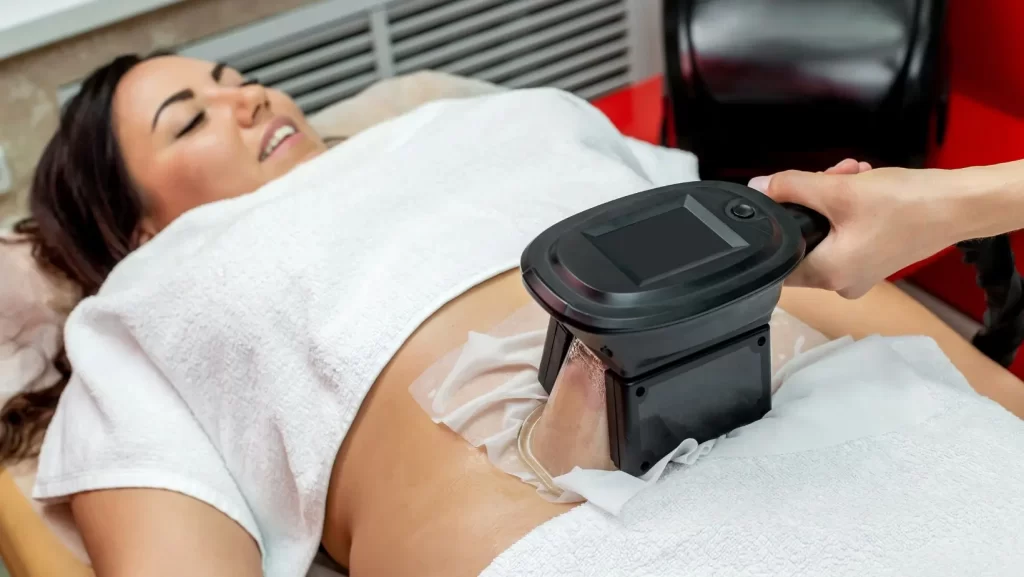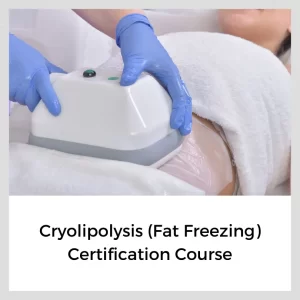Are cryolipolysis (fat freezing) risks and side effects greater than other non-invasive fat reduction treatments?

Non-invasive fat reduction treatments are in demand and continue to grow in popularity, largely due to their reputation for safety. And while it’s true that non-invasive fat reduction treatments carry very few risks and minimal side effects, some technologies carry more risks and cause more side effects than others. To treat patients safely and effectively, you must know the downsides, i.e. the risks and side effects, as well as the upsides, i.e. the ease of care and great results, of your treatments. In this article, we explore the upsides and downsides of cryolipolysis (fat freezing) technology, examine the cryolipolysis (fat freezing) risks and side effects, and we discuss how the cryolipolysis (fat freezing) risks and side effects compare to other non-invasive fat reduction treatments such as ultrasound fat cavitation and lipo laser.
- Before we dive in, it’s important to note that we’re not dissuading you from using cryolipolysis (fat freezing) technology.
- We’ve spent nearly twenty years owning and operating medspas. And throughout those years, we’ve treated thousands of patients using multiple non-invasive fat reduction technologies and devices.
- We believe cryolipolysis (fat freezing) has a definite place in body contouring:
- Number one, it’s the original ‘fat blaster.’
- Number two, it’s the most well known and recognizable technology in body contouring.
- Number three, it’s one of the six most popular body contouring treatments.
- And number four, we believe in it so much that we’ve authored a top-rated body contouring certification course in cryolipolysis (fat freezing).
Our point is that you must be prepared to manage and/or prevent harm from the possible risks and side effects of every technology you offer, including cryolipolysis (fat freezing).
Now…we just mentioned that cryolipolysis (fat freezing) is the most recognizable technology, but it’s also the most misunderstood…
Are cryolipolysis (fat freezing) treatments and coolsculpting treatments the same?
The short answer is ‘no.’
The long answer is ‘no, not exactly; it’s complicated.’
Cryolipolysis (fat freezing)
- Cryolipolysis (fat freezing) is the name of the technology that delivers cold temperatures to destroy fat cells.
- This technology is utilized by many different machines and devices.
- Cryolipolysis (fat freezing) is a technology; it is not a particular device or machine.
Whereas…
Coolsculpting
- Coolsculpting is the brand name of the first and most well known fat reduction device and it utilizes cryolipolysis (fat freezing) technology.
- Coolsculpting is the name of one device; it is not the name of the technology and should not be used for or labeled on any other device.
Here’s the problem:
↪ More-often-than-not, the terms coolsculpting and cryolipolysis (fat freezing) are used interchangeably.
↪ And any/all machines that deliver the cryolipolysis (fat freezing) technology are routinely referred to as ‘coolsculpting.’
Part 1
An overview of cryolipolysis (fat freezing) technology
How the cryolipolysis (fat freezing) technology works
Cryolipolysis (fat freezing) is a non-invasive body contouring technology that delivers cold temperatures to freeze fat cells until they die, without damaging the skin or surrounding tissue.
Over a period of time, usually between six and twelve weeks after each cryolipolysis (fat freezing) treatment, the patient’s body metabolizes and eliminates the dead fat cells and other debris left behind from the treatment. This is when you will see the fat reduction.
Who is a good/poor candidate for cryolipolysis (fat freezing)?
- The best candidate is a patient who has a small to medium sized problem area that is resistant to diet and exercise.
- Patients with large problem areas or who have a larger amount of fat can be treated - and will still see reduction - but it may require more treatments and see the reduction they desire.
- Good candidates have good skin elasticity so it will bounce back when the fat is eliminated. The treatment is not intended to tighten loose skin.
- We recommend against cryolipolysis (fat freezing) treatments for patients with loose skin or older patients with normal skin aging issues.
- Patients who have poor circulation, a neuropathy, a defibrillator or who are pregnant or breastfeeding should not have a cryolipolysis (fat freezing) treatment.
- And patients who have been diagnosed with the following conditions
- Paroxysmal cold hemoglobinuria
- Cold agglutinin disease
- Cryoglobulinemia
should not undergo a cryolipolysis (fat freezing) treatment due to the risk unique to the cryolipolysis (fat freezing) technology, PAH. More on PAH later.
Learn both the upsides and the downsides of Cryolipolysis (Fat Freezing)

Get the details of our online cryolipolysis certification course
Part 2
The cryolipolysis (fat freezing) risks and side effects
The cryolipolysis (fat freezing) risks and side effects start with the treatment experience
I. The steps of the cryolipolysis (fat freezing) treatment
- The patient is treated lying down with the treatment area exposed.
- The treatment area will be mapped out, a protective gel pad will be applied to the treatment area, followed by application of the fixed applicator.
- Some applicators have a vacuum that sucks in the skin and fat. Other fixed applicators apply only pressure. And some machines come equipped with non-fixed applicators that are moved about the treatment area manually.
- As the applicator lowers the patient’s temperature to -10°, the patient will start feeling uncomfortable:
- Uncomfortable deep cold
- Stinging
- Tingling
- Cramping
- Pinching
These symptoms usually subside after the area becomes numb - about 10 minutes into the treatment.
- When the treatment is complete, the applicators are removed.
- With fixed applicators, the patient will be left with tissue in the shape of a ‘stick of butter.’. This area will be massaged so as to smooth it out and to kickstart the elimination of fat.
- Treatment time varies between thirty minutes and an hour.
II. The difficulties of the cryolipolysis (fat freezing) treatment experience
Cryolipolysis (fat freezing) presents a challenging treatment experience for most patients and is described as painful by some patients.
- During treatment, patients may feel intense cold, pinching, tingling, aching, stinging and cramping in the treatment area.
- The immediate post-treatment massage can also be extremely painful for many patients, at least during the first several minutes of the massage.
Other non-invasive fat reduction treatments like cavitation and lipo laser can be performed without discomfort or pain.
Managing a patient undergoing a cryolipolysis (fat freezing) treatment can be more challenging; therefore providers must prepare to provide the necessary support for their cryolipolysis patients.
The cryolipolysis (fat freezing) risks and side effects continue post treatment with a prolonged recovery period
Most patients don’t need actual downtime following cryolipolysis (fat freezing), but there’s still a recovery period that can vary in intensity, depending on the patient…a recovery that is longer than other non-invasive fat reduction treatments like ultrasound cavitation, lipo laser, etc…and with side effects that do not occur with other non-invasive fat reduction treatments like ultrasound cavitation, lipo laser, etc.
Here’s what patients can experience after a cryolipolysis (fat freezing) treatment:
- Soreness or pain (short term or long term) to the treatment area.
- Redness and/or bruising to the treatment area.
- Numbness to the treated area.
- Swelling to the treatment area. Swelling to the treatment area typically lasts around two weeks, but can last longer…up to a month.
- Within the first five days following treatment as nerves that had been damaged from the cold regenerate, patients can experience stinging, tingling and/or cramping in the treatment area.
- Between one and two weeks post treatment, the treatment area can feel itchy.
- With poor patient selection, the patient can be left with loose skin after treatment.
These cryolipolysis (fat freezing) risks and side effects both raise concerns and require special care…but there is one Serious Risk that we have yet to mention that is unique to cryolipolysis…
The most serious of the cryolipolysis (fat freezing) risks and side effects
- Cryolipolysis (fat freezing) carries the unique risk of paradoxical adipose hyperplasia (PAH). PAH is a process whereby fatty fibrous tissue grows in the treated area, rather than shrinking.
- PAH is considered rare, but many experts believe it to be severely underreported.
- Many theories exist about the cause of PAH following cryolipolysis (fat freezing), but as of now the cause has not been found.
- PAH will not resolve on its own. Liposuction is needed to reduce PAH.
Is PAH seen with other non-invasive fat reduction technologies?
- PAH is unique to cryolipolysis (fat freezing). It has never been reported following the use of other non-invasive fat reduction technologies, i.e. ultrasound fat cavitation, lipo laser, radiofrequency, etc.
Final Thoughts
Discovering the safest and most effective path in body contouring involves understanding the nuances of each technology. In this article, we’ve dissected the cryolipolysis (fat freezing) risks and side effects and compared it to other non-invasive fat reduction treatments.
While cryolipolysis (fat freezing) delivers remarkable results, providers must possess a grasp of its potential downsides, including discomfort during treatment and post treatment effects like soreness and swelling. Most notably, cryolipolysis (fat freezing) carries the unique risk of paradoxical adipose hyperplasia (PAH), necessitating careful consideration for both providers and patients.
Obtain the knowledge needed to practice safely. Our Cryolipolysis (Fat Freezing) Body Contouring Certification course will give you the knowledge you need to make informed decisions and ensure optimal outcomes throughout your body contouring career.
